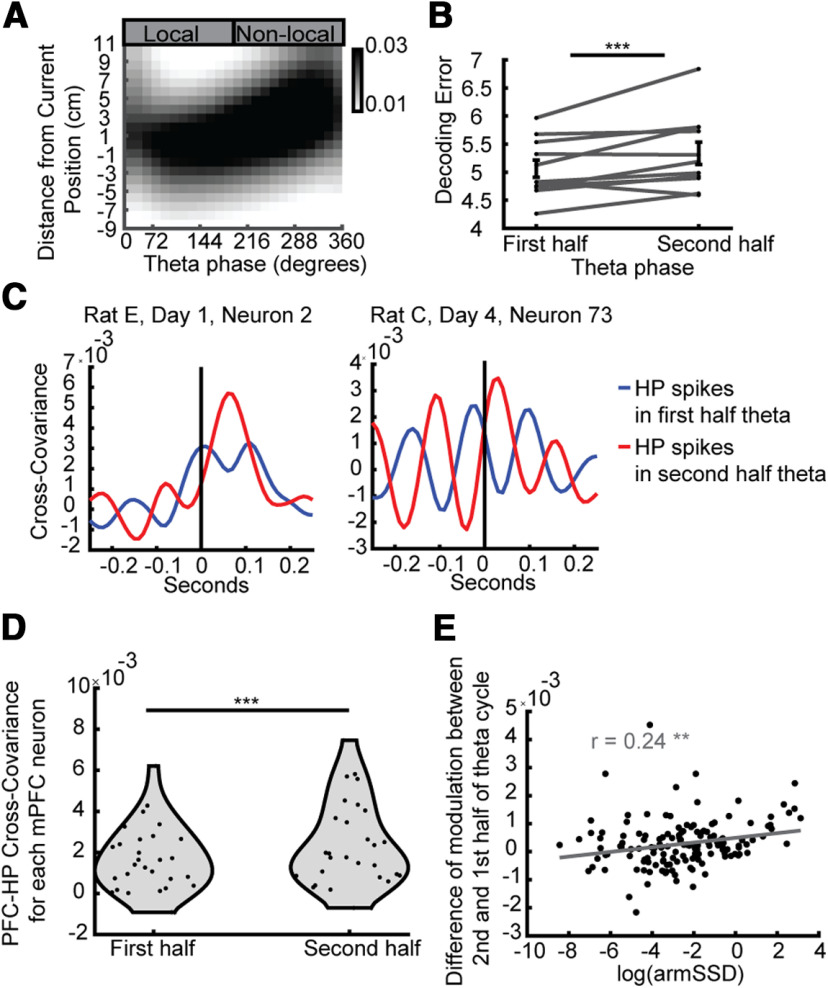Figure 5.
Late-phase HP spikes were more non-local and more closely related to PFC neurons' spiking. A, Average theta sequence (decoded estimate of position from HP neurons across HP theta phases, centered on the current position of the rat). B, The second half of the theta sequence cycle was more non-local than the first. One-sided Wilcoxon signed-rank test, N = 11, 11, z = −2.36, p < 0.007. C, Example PFC neurons' (left, rat E, day 1, neuron 2; right, rat C, day 4, neuron 73) cross-covariance with the HP spikes from either the first or second half of theta cycles. Positive values of the x-axis correspond to HP spikes leading PFC spikes. In both neurons the peak of the cross-covariance was higher when using HP spikes from the second half of theta. D, Across all significantly differentially modulated PFC neurons, the peak cross-covariance driven by HP spikes was higher for spikes coming from the second half of the theta cycle than the first. Two-sided Wilcoxon signed-rank test, N = 28, N = 28, p = 6.8e-5. E, Across all PFC neurons, the more differentially modulated a neuron was (log of the sum of squared differences (armSSD) of modulation between replays of different arms) the higher the cross-covariance peak related to HP spikes in later theta phases compared with earlier phases of theta was. There are significant Pearson's correlations between both the arm SSD (R = 0.32, p = 7.6e-5) and the log of the armSSD (R = 0.24, p = 3.6e-3); ***p < 0.001, **p < 0.01. Error bars represent SEM.

